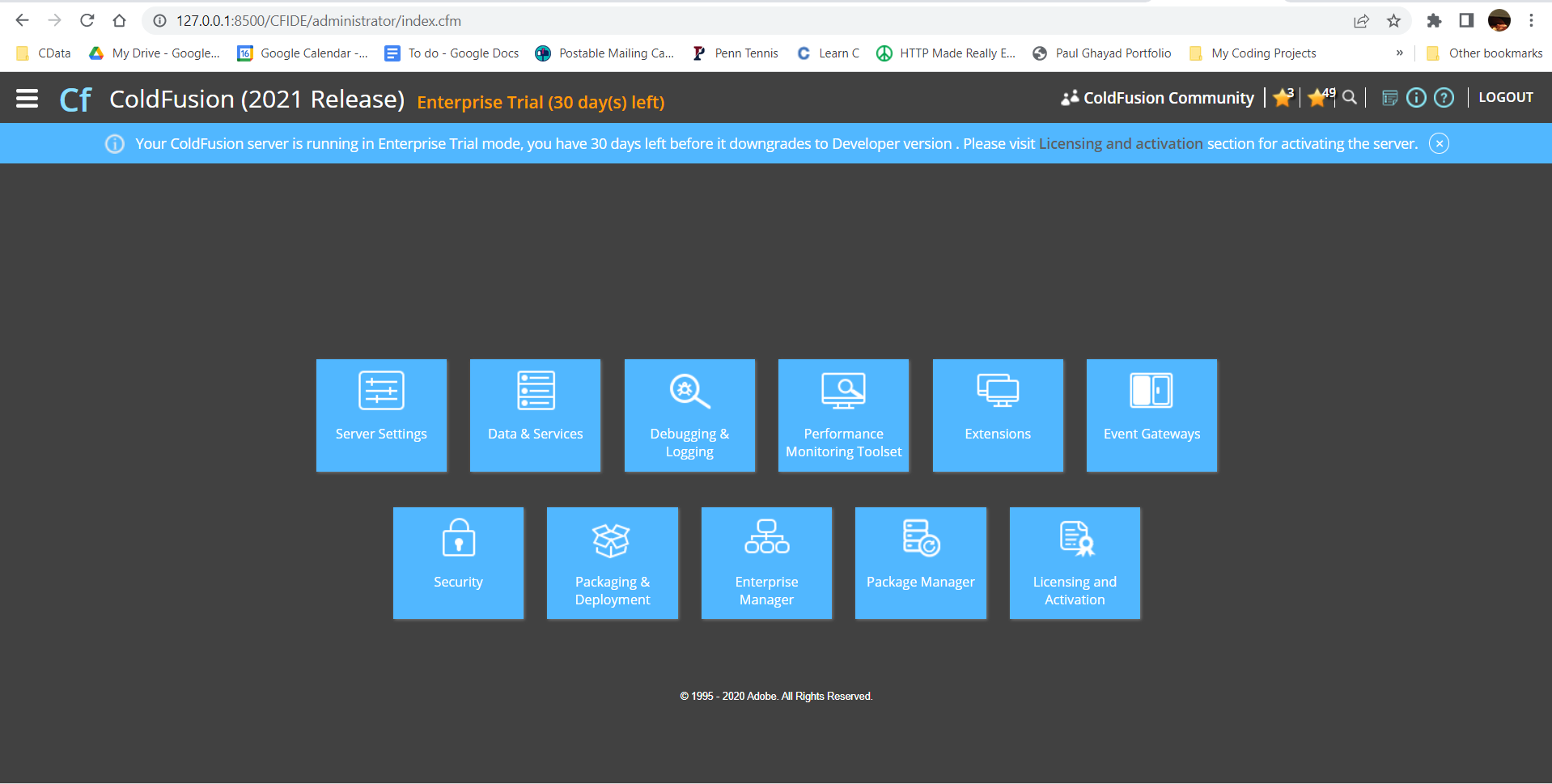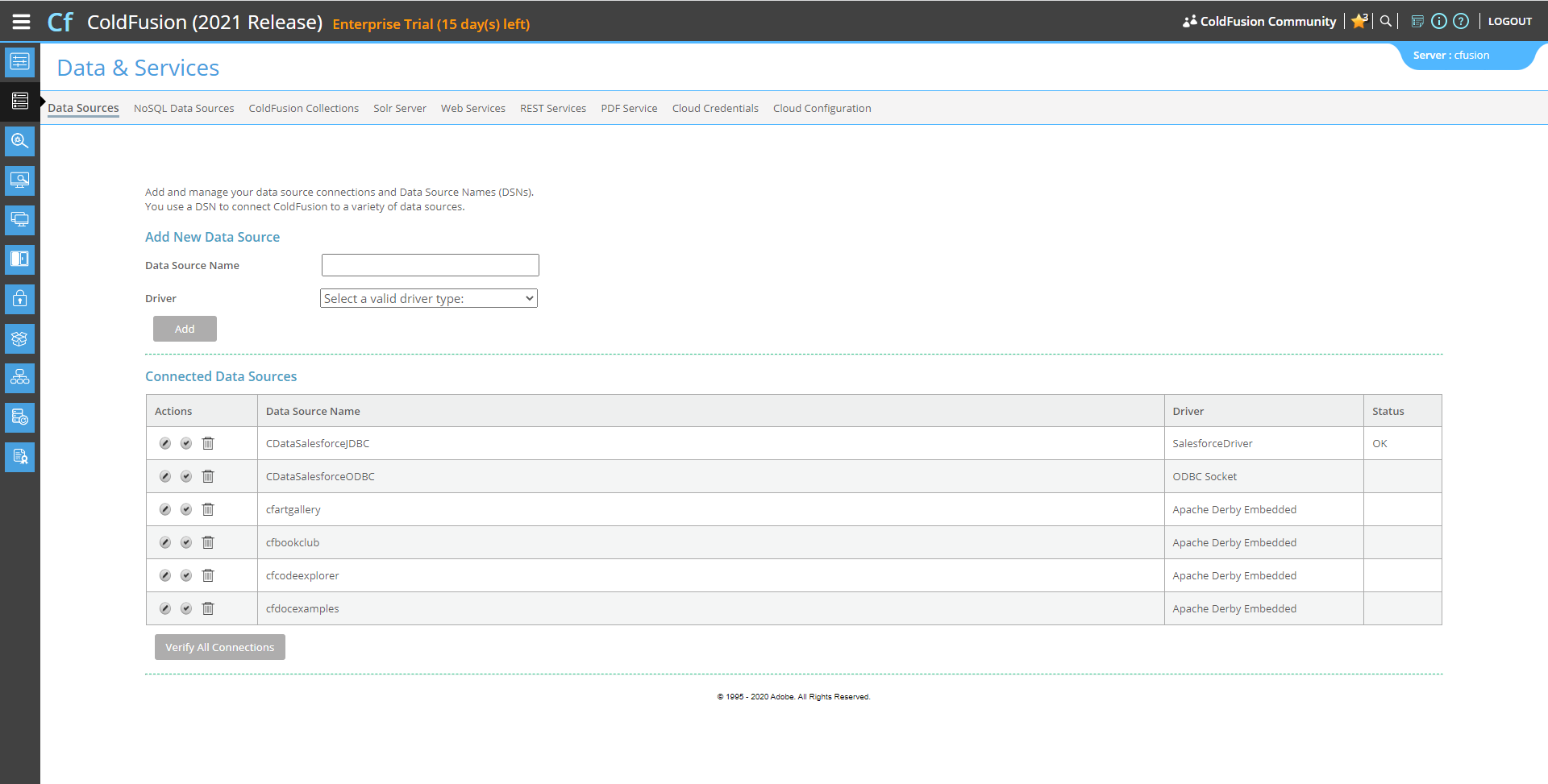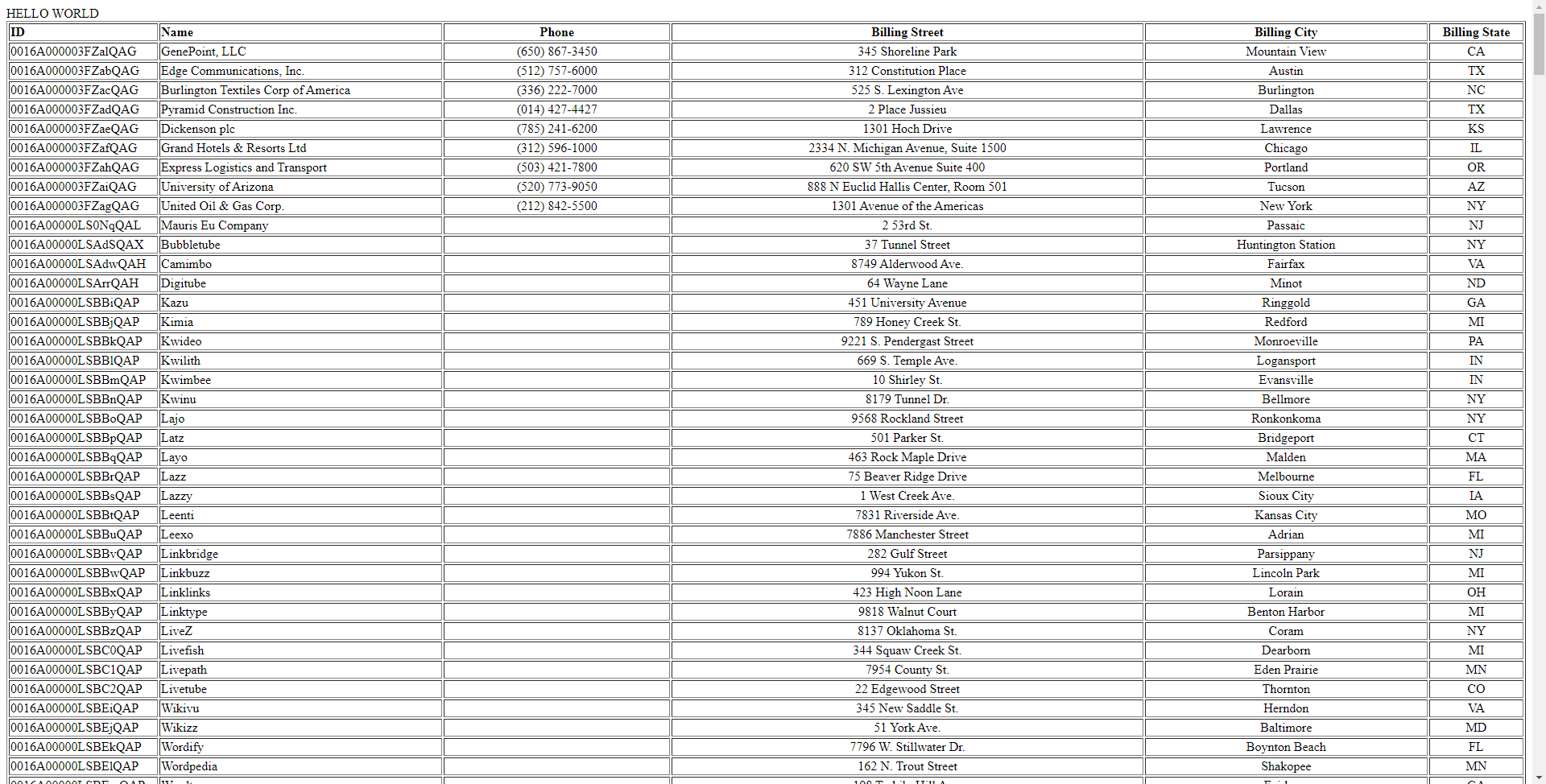Discover how a bimodal integration strategy can address the major data management challenges facing your organization today.
Get the Report →Import Real-Time Bitbucket Data in ColdFusion to Build Applications
Use CData JDBC drivers to import and use Bitbucket data in ColdFusion.
Adobe ColdFusion is a web and mobile application development platform. It uses its own scripting language, ColdFusion Markup Language (CFML), to create data-driven websites as well as generate remote services, such as REST.
When ColdFusion is paired with the CData JDBC Driver for Bitbucket, you can link your ColdFusion web and mobile applications to operational Bitbucket data. This allows for your applications to be more robust and complete. This article details how to use the JDBC driver to create a table populated with Bitbucket data from within a ColdFusion markup file.
With built-in optimized data processing, the CData JDBC Driver offers unmatched performance for interacting with live Bitbucket data. When you issue complex SQL queries to Bitbucket, the driver pushes supported SQL operations, like filters and aggregations, directly to Bitbucket and utilizes the embedded SQL engine to process unsupported operations client-side (often SQL functions and JOIN operations). Its built-in dynamic metadata querying allows you to work with and analyze Bitbucket data using native data types.
Configuring the Connection to Bitbucket
You will need a JDBC connection string to establish a connection between Coldfusion and Bitbucket.
For most queries, you must set the Workspace. The only exception to this is the Workspaces table, which does not require this property to be set, as querying it provides a list of workspace slugs that can be used to set Workspace. To query this table, you must set Schema to 'Information' and execute the query SELECT * FROM Workspaces>.
Setting Schema to 'Information' displays general information. To connect to Bitbucket, set these parameters:
- Schema: To show general information about a workspace, such as its users, repositories, and projects, set this to Information. Otherwise, set this to the schema of the repository or project you are querying. To get a full set of available schemas, query the sys_schemas table.
- Workspace: Required if you are not querying the Workspaces table. This property is not required for querying the Workspaces table, as that query only returns a list of workspace slugs that can be used to set Workspace.
Authenticating to Bitbucket
Bitbucket supports OAuth authentication only. To enable this authentication from all OAuth flows, you must create a custom OAuth application, and set AuthScheme to OAuth.
Be sure to review the Help documentation for the required connection properties for you specific authentication needs (desktop applications, web applications, and headless machines).
Creating a custom OAuth application
From your Bitbucket account:
- Go to Settings (the gear icon) and select Workspace Settings.
- In the Apps and Features section, select OAuth Consumers.
- Click Add Consumer.
- Enter a name and description for your custom application.
- Set the callback URL:
- For desktop applications and headless machines, use http://localhost:33333 or another port number of your choice. The URI you set here becomes the CallbackURL property.
- For web applications, set the callback URL to a trusted redirect URL. This URL is the web location the user returns to with the token that verifies that your application has been granted access.
- If you plan to use client credentials to authenticate, you must select This is a private consumer. In the driver, you must set AuthScheme to client.
- Select which permissions to give your OAuth application. These determine what data you can read and write with it.
- To save the new custom application, click Save.
- After the application has been saved, you can select it to view its settings. The application's Key and Secret are displayed. Record these for future use. You will use the Key to set the OAuthClientId and the Secret to set the OAuthClientSecret.
Built-in Connection String Designer
For assistance in constructing the JDBC URL, use the connection string designer built into the Bitbucket JDBC Driver. Either double-click the JAR file or execute the jar file from the command-line.
java -jar cdata.jdbc.bitbucket.jar

Adding a Data Source and Creating a Table
After configuring the connection, follow the steps below to add the CData JDBC Driver to ColdFusion's lib directory, add a new data source, test the connection, create a ColdFusion markup file, and, finally, make a real-time connection with Bitbucket data and display it in a table written in the ColdFusion Markup Language, or CFML:
-
Copy the JDBC Driver for Bitbucket and lic file from "C:\Program Files\CData[product_name]\lib" to
"C:\ColdFusion2021\cfusion\wwwroot\WEB-INF\lib".
cdata.jdbc.bitbucket.jar cdata.jdbc.bitbucket.licNote: If you do not copy the .lic file with the jar, you will see a licensing error that indicates you do not have a valid license installed. This is true for both the trial and full versions.
-
From the ColdFusion administrator interface, choose Data & Services.
![Selecting Data & Services]()
-
Here, we can "Add New Data Source". The data source name can be any name, provided it conforms to the ColdFusion
variable naming conventions. For our JDBC driver, choose "other", then click the "Add" button.
![Adding Data Source Name]()
-
Next, populate the driver properties.
- JDBC URL will need to be in the format: jdbc:bitbucket:|connectionString|.
- A typical connection string looks like this:
jdbc:bitbucket:Workspace=myworkspaceslug;Schema=InformationInitiateOAuth=GETANDREFRESH
- The Driver Class is: cdata.jdbc.bitbucket.BitbucketDriver
- The Driver Name is arbitrary and simply used to recognize the data source in the ColdFusion administration console.
![Populating driver properties]()
-
Now, test the connection by clicking the check mark to the left of the CDataBitbucketJDBC data source you just created.
When the data source reports an "OK" status, it is ready for use.
![Testing the connection]()
-
Next, create a new ColdFusion Markup file (.cfm) and place it in the wwwroot directory ("C:\ColdFusion2021\cfusion\wwwroot")
for ColdFusion.
The following code queries the data source:
<cfquery name="BitbucketQuery" dataSource="CDataBitbucketJDBC"> SELECT * FROM Issues </cfquery>And a CFTable can be used to quickly output the table in HTML:<cftable query = "BitbucketQuery" border = "1" colHeaders colSpacing = "2" headerLines = "2" HTMLTable maxRows = "500" startRow = "1"> <cfcol header="<b>Title</b>" align="Left" width=2 text="Title"/> <cfcol header="<b>ContentRaw</b>" align="Left" width=15 text="ContentRaw"/> ... </cftable>Full code, including the HTML portion is available below:<html> <head><title>CData Software | Bitbucket Issues Table Demo </title></head> <body> <cfoutput>#ucase("Bitbucket Issues Table Demo")#</cfoutput> <cfquery name="BitbucketQuery" dataSource="CDataBitbucketJDBC"> SELECT * FROM Issues </cfquery> <cftable query = "BitbucketQuery" border = "1" colHeaders colSpacing = "2" headerLines = "2" HTMLTable maxRows = "500" startRow = "1"> <cfcol header="<b>Title</b>" align="Left" width=2 text="Title"/> <cfcol header="<b>ContentRaw</b>" align="Left" width=15 text="ContentRaw"/> ... </cftable> </body> </html> -
Finally, run the code locally in a browser at the default port of 8500. It produces a table populated with Bitbucket data!
![Running the code]()
As a note, the CData JDBC Drivers also support parameterized queries using the cfqueryparam element.
For example:
SELECT * FROM Account WHERE name =
Get Started Today
Download a free, 30-day trial of the CData JDBC Driver for Bitbucket and start building Bitbucket-connected applications with Adobe ColdFusion. Reach out to our Support Team if you have any questions.











